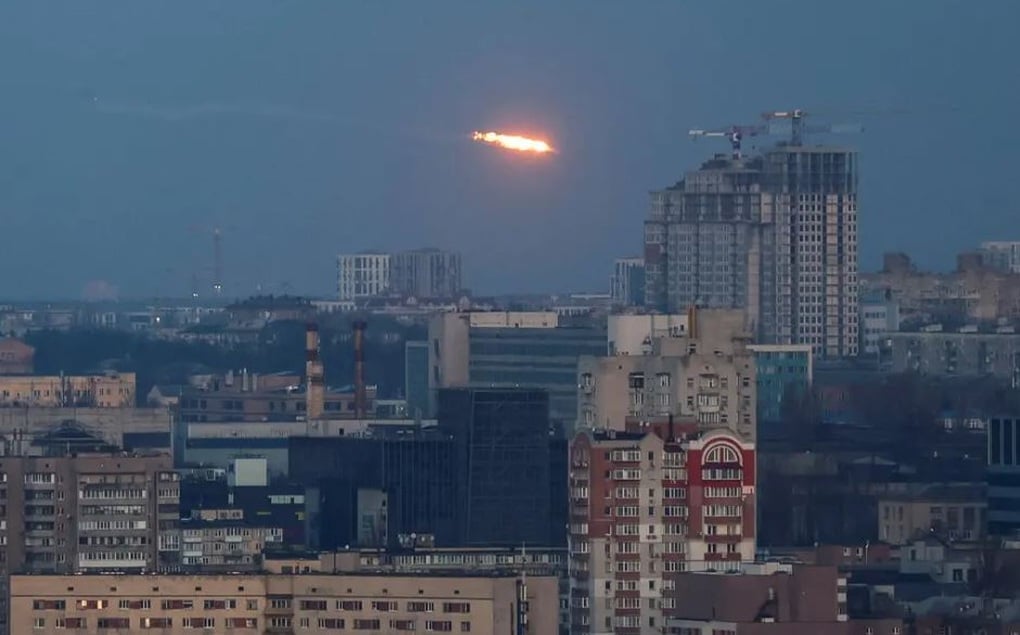
A rocket exploded in the sky over Kiev on December 28, 2023 (Photo: Reuters).
Over the past several months, Ukraine's use of powerful Western-supplied air defense systems to repel Russian missile attacks has given its citizens some reassurance that a "shield" has been erected to protect major cities like the capital Kiev.
However, on December 28, 2023, that shield was partially breached. Russia launched one of the largest airstrikes since the conflict began, firing so many missiles that Ukraine's defenses appeared to be overwhelmed.
Faced with a complex array of airborne weapons, the Ukrainian air force claimed to have shot down only 87 of 122 Russian missiles, achieving a combat efficiency of about 70%. Many of these missiles were hypersonic and ballistic missiles that penetrated Ukraine's air defense system.
Serhii Kuzan, chairman of the Center for Security and Cooperation of Ukraine research group, admitted that the Russian airstrikes "overwhelmed Ukrainian air defenses".
According to analysts, Ukraine's flawed air defense system and the intensity of Russia's massive attacks are the reasons why many missiles easily penetrated and reached their targets.
However, military experts and Ukrainian officials said the airstrike also showed that Russia had learned the best ways to evade Ukraine's air defense system and strike hard at the country.
Over the past several months, Russia has stockpiled large numbers of high-precision missiles and deployed scores of drones, in what appears to be a campaign by Moscow to probe Ukraine’s defenses.
Expert Kuzan said that this airstrike was planned "very systematically" by Russia.
“Russia attacks with drones, ballistic and hypersonic missiles, combining them in different waves and launching them from different locations,” Kuzan said.
According to Kiev statistics, the Russian airstrikes killed at least 39 people, injured about 160 others, and hit important industrial and military infrastructure as well as civilian buildings including hospitals and schools.
The Russian offensive has also raised concerns about Ukraine's ability to withstand similar attacks in the future, as a protracted war leaves Kiev short of key weapons, including anti-aircraft missiles, while Moscow continues to expand its arsenal.
"Obviously, with their existing missile arsenal, they can and will continue such attacks," Ukrainian Defense Minister Rustem Umerov warned.
After the attack, Ukrainian officials continued to call on Western allies to speed up the delivery of air defense weapons to Kiev. But internal difficulties, not only in the United States but also increasingly in Europe, have raised doubts about additional aid to Ukraine, including a crucial $50 billion aid package that the U.S. Congress has repeatedly refused to approve.
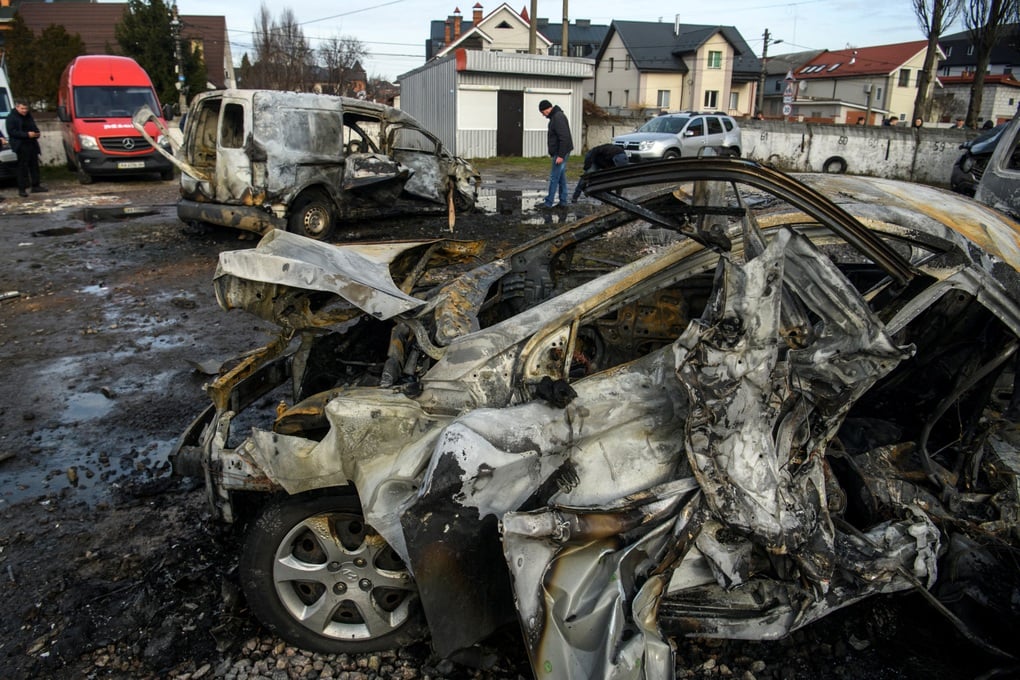
Cars burned after a raid on Kiev on December 28, 2023 (Photo: Reuters).
During Russia’s heavy bombing of Ukraine last winter, Russian missiles struck military and civilian infrastructure with relative ease, bypassing Ukraine’s then-weak air defenses. Many of the attacks targeted the power grid, plunging Ukraine into darkness and cold.
In response, Ukraine's Western allies began supplying Kiev with powerful air defense weapons, including the Patriot air defense system, which is considered the most advanced ground-based defense system available. The first Patriot battery was received by Ukraine around April last year.
Ukraine's defense capabilities were immediately improved.
According to data released by the Ukrainian Air Force, Ukraine intercepted about 83 percent of Russian missiles in May last year. On a day when Russia launched 51 missiles, the Ukrainian military said, 48 were shot down. Data compiled by Rochan Consulting, a Poland-based analysis group, shows that Ukraine’s high interception rate largely continued into December.
In response, Russia appears to have begun experimenting with different combinations of air weapons and attack vectors to find the best way to penetrate Ukraine's defenses.
Ukraine’s military says Russia has used low-cost Shahed attack drones to test Kiev’s defenses. A month ago, Russia launched about 75 drones in a nighttime attack, a “record number” at the time, according to the Ukrainian air force.
Yury Ihnat, a spokesman for the Ukrainian Air Force, said the use of drones "allows the enemy to make an assessment of its forces and assets in a particular area and to consider this data when planning future attacks."
An analysis of Russian airstrike trajectories compiled by Texty, a Ukrainian publication specializing in data journalism, shows that Russian drones often fly along major highways in southern Ukraine. The noise of the drones blends with the noise of traffic, making them harder to detect.
Russian drones are also frequently launched from Crimea. Analysis shows that sometimes the drones and missiles are fired from widely separated locations but aimed at the same target.
Ukrainian officials also warned that Russia had stockpiled missiles for a large-scale campaign that would last through this winter. According to Ukraine's military intelligence agency, Russia had amassed more than 800 high-precision missiles by early November 2023.
On December 28, Russia appeared to turn months of preparation into reality.
The Russian attack began with 30 Shahed drones launched from the north and southeast at dawn, said Gen. Valery Zaluzhny, Ukraine’s top commander. Bombers then began firing cruise missiles at around 5 a.m., followed by ballistic missiles an hour later. Finally, at 6:30 a.m., Russian warplanes launched five hypersonic Kinzhal missiles, one of the most sophisticated weapons in Russia’s arsenal.
"We saw a large number of missiles. They were scattered all over Ukraine, flying in circular routes. Some of the missiles flew in circles before hitting their targets," said Ihnat, a spokesman for the Ukrainian Air Force.
“The attack suggests that Shahed aircraft deployed ahead of the missiles may have distracted Ukrainian air defenses or triggered the attack,” said the Institute for the Study of War, a Washington-based research group.
Another possible reason why the Russian missiles evaded Ukrainian air defenses was the use of decoys. Videos on social media showed Russian cruise missiles appearing to launch heat traps, a type of decoy often used by fighter jets to confuse enemy air defenses.
Kuzan, an expert at the Center for Security and Cooperation in Ukraine, said the Russian airstrikes showed that Ukraine still did not have enough equipment to repel large-scale coordinated attacks.
On the contrary, Mr. Kuzan warned, Russia “has enough resources to carry out several more such attacks,” adding that, in his view, Moscow “is prepared for further attacks.”
Source


![[Photo] 12th grade students say goodbye at the closing ceremony, preparing to embark on a new journey](https://vphoto.vietnam.vn/thumb/1200x675/vietnam/resource/IMAGE/2025/5/28/42ac3d300d214e7b8db4a03feeed3f6a)
![[Photo] General Secretary To Lam works with the Central Policy and Strategy Committee](https://vphoto.vietnam.vn/thumb/1200x675/vietnam/resource/IMAGE/2025/5/28/7b31a656d8a148d4b7e7ca66463a6894)

![[Photo] Prime Minister Pham Minh Chinh receives a bipartisan delegation of US House of Representatives](https://vphoto.vietnam.vn/thumb/1200x675/vietnam/resource/IMAGE/2025/5/28/468e61546b664d3f98dc75f6a3c2c880)
![[Photo] Vietnamese and Hungarian leaders attend the opening of the exhibition by photographer Bozoky Dezso](https://vphoto.vietnam.vn/thumb/1200x675/vietnam/resource/IMAGE/2025/5/28/b478be84f13042aebc74e077c4756e4b)



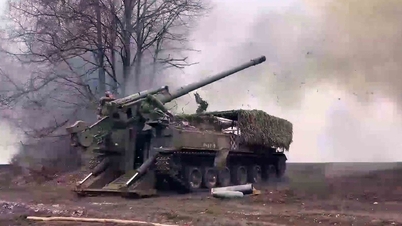



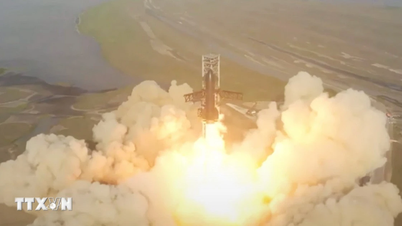





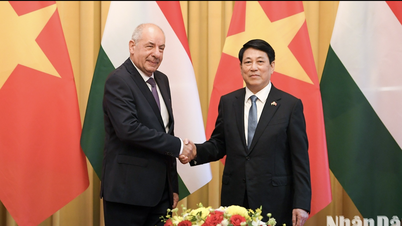










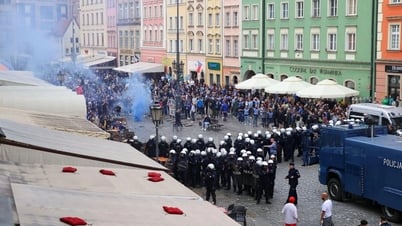

















































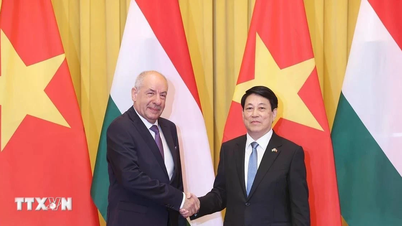
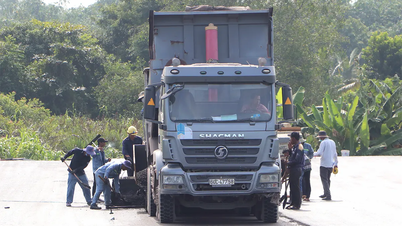












Comment (0)